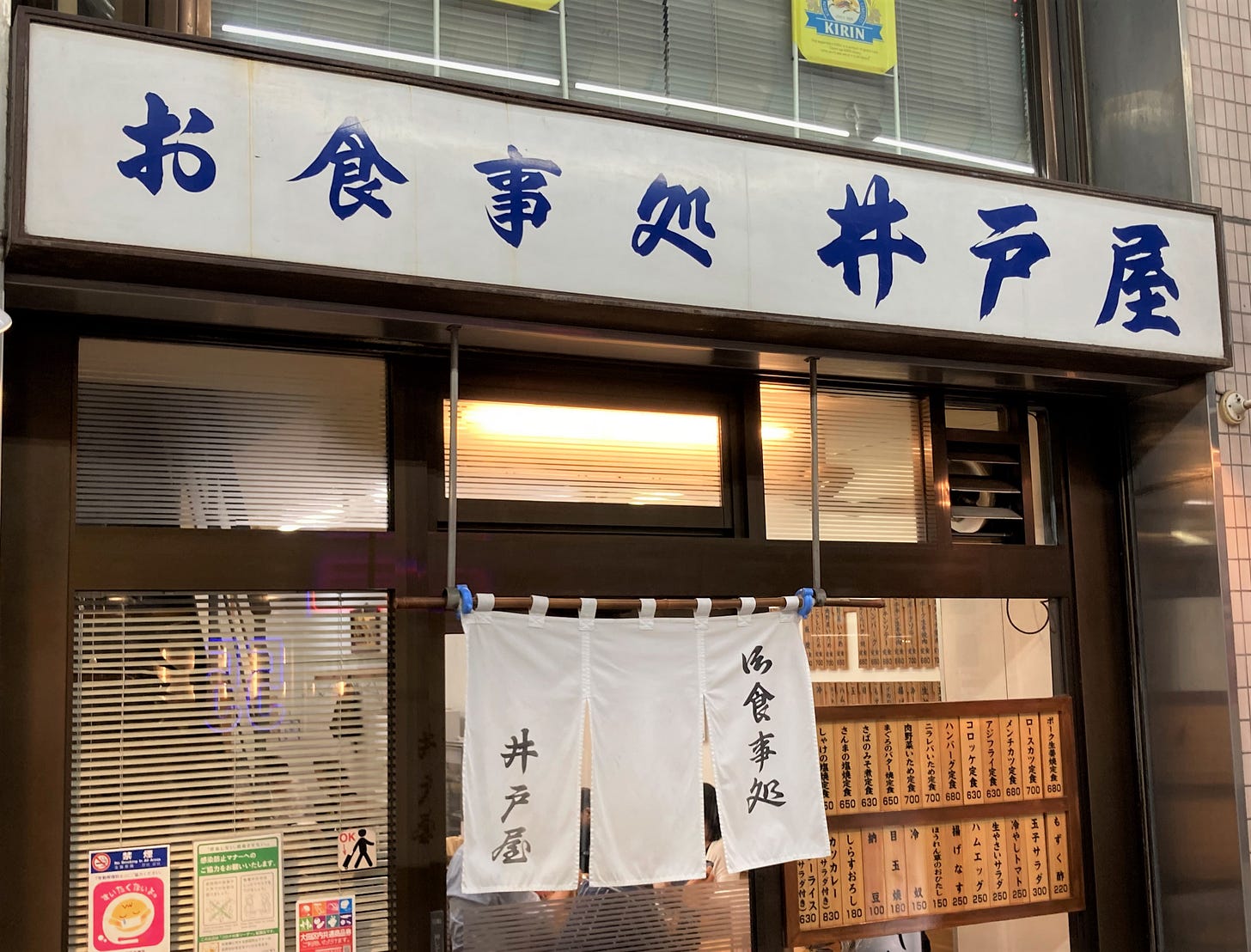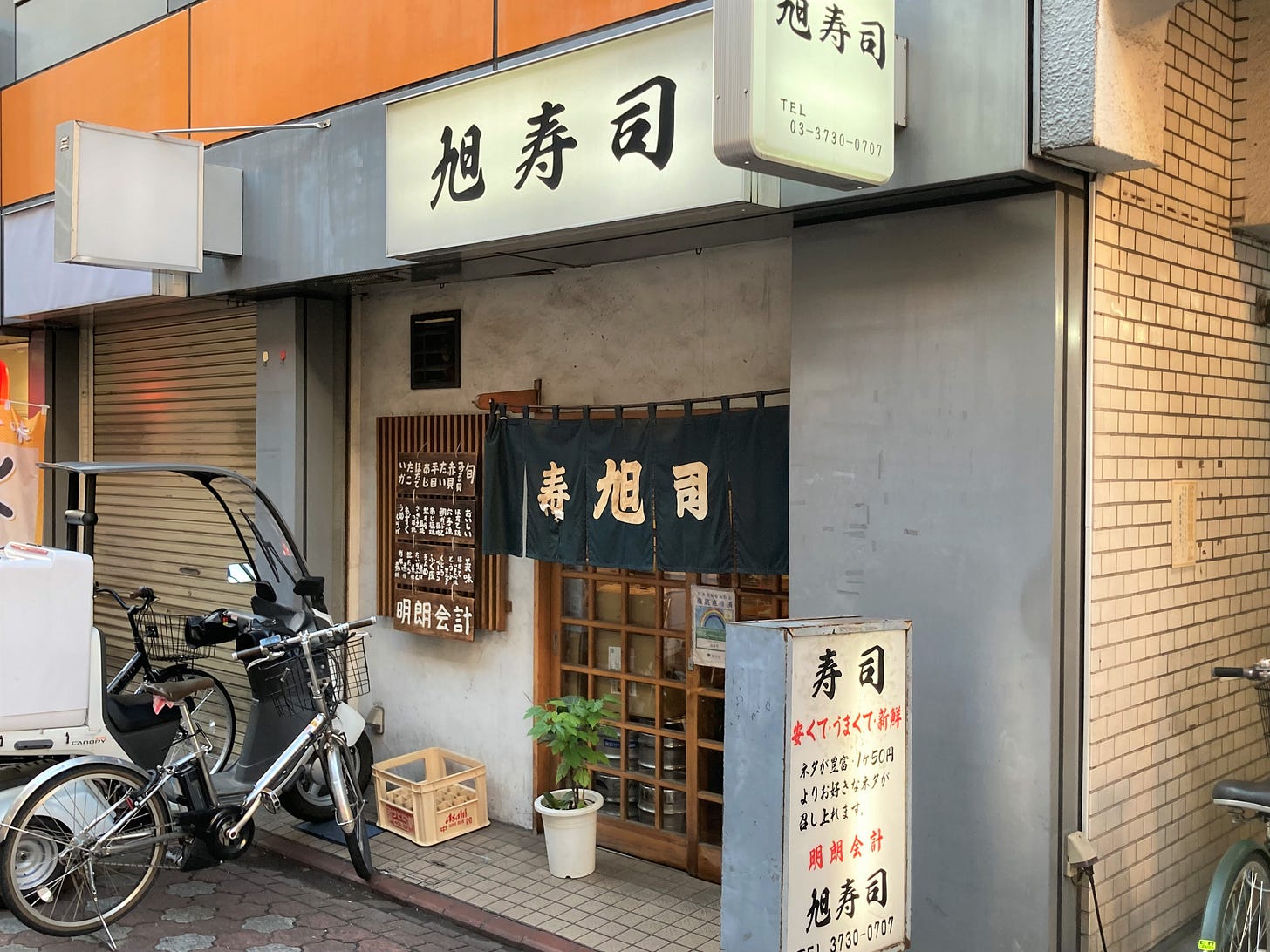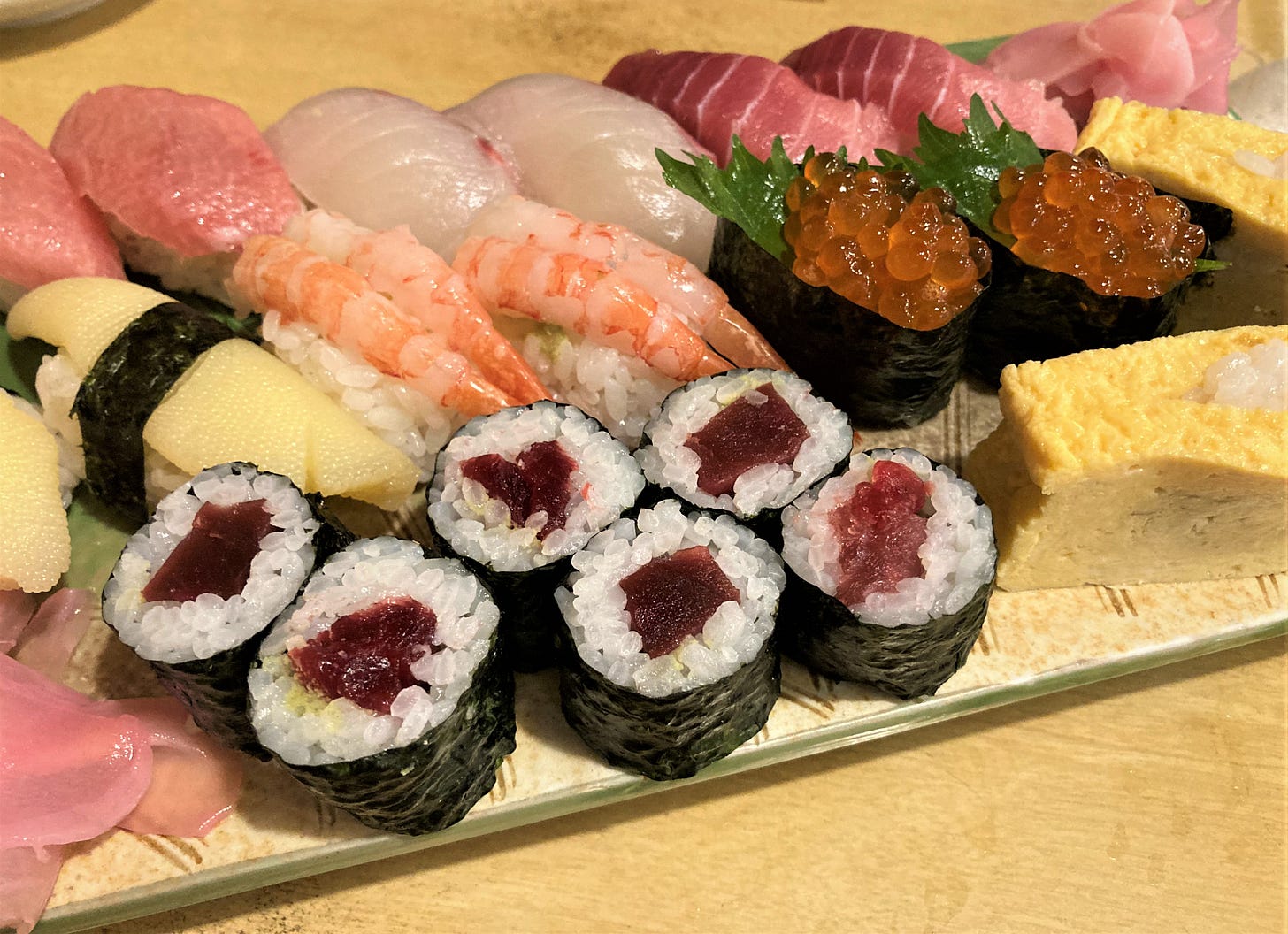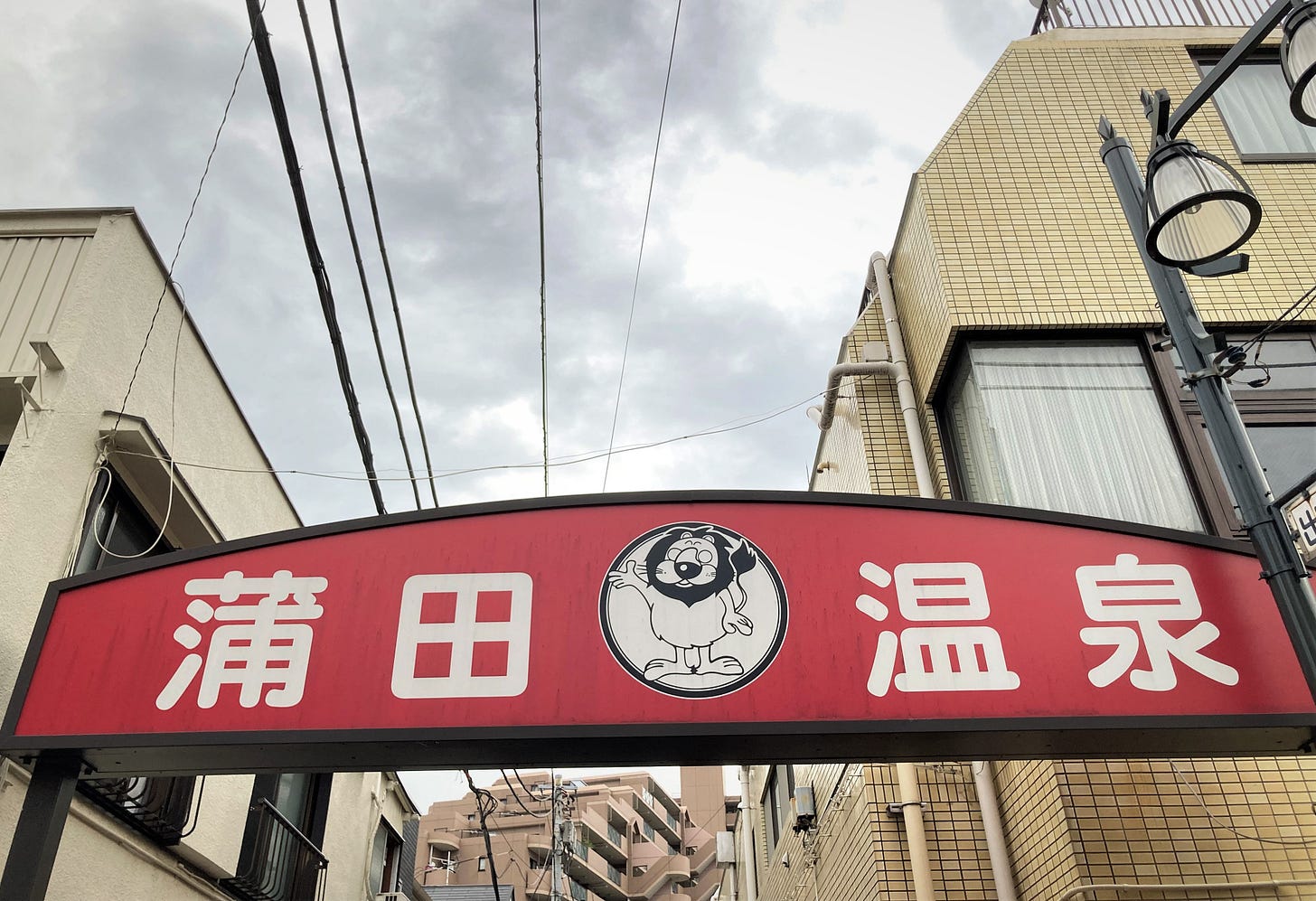#61 Another Tokyo's hidden gem: Kamata
A budget traveler's paradise for repeat visitors: Good access, authentic dining + surprising hot spring. This place has everything.
When it comes to choosing a base in Tokyo after arriving at Haneda airport, many international tourists opt for places in central Tokyo like Shinjuku for its convenience of access to the city center.
I’ve previously written a post about Shinbashi, which is another pretty central city.
However, today I would like to propose an alternative to these central locations.
Have you ever come across a place called Kamata? It often goes unnoticed as a mere transit station when traveling by train from Haneda Airport to the city center. Yet, Kamata possesses surprising compactness and fulfills all the requirements for hotels, restaurants, and access to the city center. For repeat travelers to Japan, it's a town worth considering. In this week's post, I will shed light on Kamata, which still retains the nostalgic charm of old downtown Tokyo.

What kind of town is Kamata?
In the Edo period, a teahouse called Umeyashiki was established in Kamata on this land along the Tokaido Highway leading to western Japan and even appears in Utagawa Hiroshige's 100 Views of Edo.
In the Meiji era (1868-1912), riding the wave of modern industrialization, Japanese craftsmanship emerged, in which Western technology was modified and developed in the Japanese style, improving ceramics and perfumes. Following this trend, small-scale but high-level town factories with extremely precise work are scattered throughout the area.
In 2010, international flights were restored at Haneda Airport, and in 2012, with the elevation of Keikyu Kamata Station, Kamata became an important base for welcoming foreign tourists.
Everything is in one place
Located at the southeastern edge of Tokyo, at the mouth of the Tama River, and to the west of Haneda Airport, the area between JR Kamata Station and Keikyu Kamata Station is about 800 meters (0.5 miles) away and is packed with important elements for the traveler. Let's look at it from the points of airport access, access to central Tokyo, hotels, and dining options.
Airport access
Most importantly Keikyu Kamata is 5 stations away from Haneda Airport International Terminal, and it only takes 5 minutes with the fastest train. This makes it a good option for those looking for accommodation during a long layover in Tokyo.
Access to central Tokyo
It only takes around 30 minutes to major stations like Tokyo, Asakusa, and Shinjuku, using either the JR or Keikyu line. In a city the size of Tokyo, this is very accessible. Each line has its own Kamata stations but they are only 15 minutes apart by foot.
Bonus point: If you decide to stay near the JR Kamata Station, it will be within the area of the Tokyo Metropolitan Pass (760 Yen per day) and you can cover lots of places with this pass.
Hotels
You’ll find many three-star hotels as low as 7,000 yen per night for 2 people which makes it great for budget travelers who want to save money on accommodation. However, there are not many higher-end hotels in this area so it’s not for those looking to stay in a 4-star hotel. If you want to sleep, you will find many options.
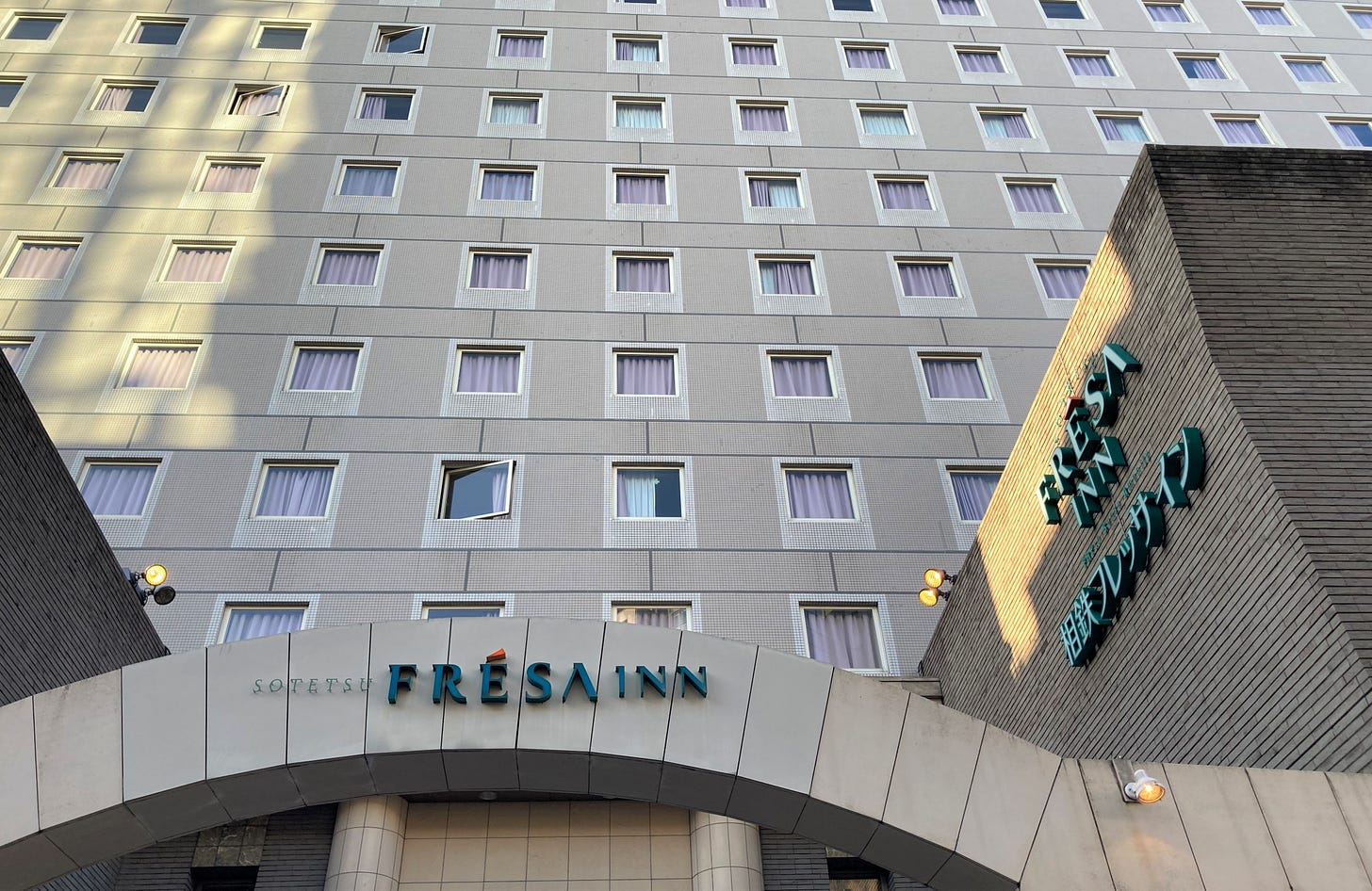
Dining: my top 3 favorites
There are many authentic Japanese restaurants in this area, and it will be difficult for you to fall into a tourist trap.
1. Teisyoku — a traditional authentic Japanese set meal
Teisyoku-ya is a type of Japanese restaurant specializing in set meals consisting of a main dish, rice, miso soup, pickles, and side dishes — a well-rounded healthy, and affordable dining option in Japan. The main dish has options for different proteins such as grilled fish, tonkatsu, teriyaki chicken, or tempura.
My favorite is a Teisyoku-ya* called Idoya near the Keikyu Kamata Station which offers meals that are your typical Japanese mom’s cooking. And it only costs around 1,000 yen per meal!
2. Sushi
Asahi-sushi is my favorite sushi restaurant. In the restaurant, you can find all the prices from sushi to tsunami (Japanese tapas) on the walls. According to the master, some foreign travelers seem to think that the restaurant serves Japanese meals, but he says that it’s more like a Japanese bar that also serves sushi. That is why there are lots of seafood appetizers.
3. Dumplings
"Dumpling with feathers" is something that has become very popular in Japan recently, even among locals. (You can even find them as frozen foods sold in supermarkets!) And the birthplace of this dumpling with feathers is said to be Kamata, at a restaurant called "Niihao”. Today, there are several restaurants specializing in this type of gyoza, so try them out if you have the time. It will not cost you more than 2,000 yen for dumplings and a glass of beer.
The Kamata's Feathered Gyoza special broadcasted about a year ago on Japan's commercial broadcaster TBS will explain the essence of this dish, although it is in Japanese.
Hot springs
It may be hard to believe that a hot spring can be found in the middle of such a city, but Kamata does have a hot spring facility. And since they are the same price as sento (public bathhouses) in the city, hot spring fans should not miss them.
Kamata Onsen is a 10-minute walk southeast of JR Kamata Station. Although it looks like an ordinary public bathhouse, the spring water contains black sodium bicarbonate and is said to have health benefits for neuralgia, oversensitivity to cold, and relief of fatigue. The hot water in this area is blackish brown with low transparency (about 10 cm) due to the presence of minerals.
Summary
Kamata may not satisfy all travelers, but it is a great place for those on a budget and a somewhat seasoned traveler who has been to Japan several times. If you have half a day to spare on the day of arrival or departure, it might be a good idea to stay in Kamata for one night and explore. I can say that Kamata may be the closest town to Haneda Airport that still retains a trace of good old Tokyo.







